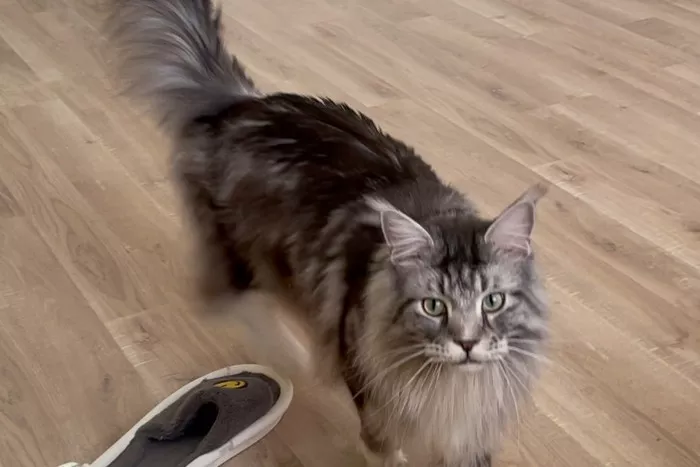Cats, known for their independent nature and mysterious demeanor, can sometimes exhibit behavior that includes biting. While biting is a natural feline instinct, it can be disconcerting for cat owners. The good news is that, with patience and understanding, it is indeed possible to train a cat not to bite. In this article, we explore the reasons behind cat biting, effective training strategies, and tips for fostering a peaceful coexistence between feline companions and their human counterparts.
Decoding Cat Biting Behavior
Instinctual Nature
Cats are natural hunters, and their play often involves behaviors associated with hunting, such as stalking, pouncing, and yes, biting. In the wild, these instincts are essential for survival. However, in a domestic setting, where cats are cherished members of the family, biting can be a cause for concern.
Communication Tool
Cats use biting as a form of communication. Mother cats teach their kittens proper behavior through gentle nips, and cats may use biting to express a range of emotions, from excitement to frustration. Understanding the motive behind the biting is crucial for effective training.
Effective Training Strategies
1. Early Socialization
The key to preventing excessive biting behavior lies in early socialization. Kittens learn acceptable behavior from their mother and littermates, so adopting a kitten at an early age provides an opportunity for positive influence. Encourage gentle play and discourage rough behavior from the start.
2. Gentle Play and Positive Reinforcement
Engaging in interactive play with your cat using toys can redirect their hunting instincts in a non-harmful way. Use toys that maintain a safe distance between your hands and your cat’s teeth. When your cat engages in gentle play without biting, reward them with treats or affection. Positive reinforcement helps reinforce desirable behavior.
3. Set Boundaries
Establishing clear boundaries is crucial in training a cat not to bite. If your cat becomes too rough during play, immediately cease the interaction and withdraw attention. Cats quickly learn to associate rough play with the cessation of fun, promoting a connection between biting and the end of enjoyable activities.
4. Understand Body Language
Cats communicate with their bodies, and being attuned to their signals can prevent biting incidents. Watch for signs of agitation, such as twitching tails or flattened ears. If your cat seems irritated, give them space rather than engaging in play.
5. Use Deterrents
Certain deterrents, such as bitter-tasting sprays applied to your hands or household items, can discourage biting. Cats often dislike the taste, associating it with the biting target. However, it’s essential to choose pet-safe deterrents and consult with a veterinarian if unsure.
6. Seek Professional Advice
In some cases, especially if biting behavior persists or becomes aggressive, seeking advice from a professional animal behaviorist or a veterinarian is advisable. They can provide tailored guidance based on the specific dynamics of your relationship with your cat.
Tips for Fostering a Harmonious Relationship
Consistent Training
Consistency is key in any training endeavor. Reinforce positive behavior consistently and avoid inadvertently encouraging undesirable actions. Consistent responses help cats understand the consequences of their behavior.
Patience and Understanding
Training a cat not to bite requires patience and a deep understanding of feline behavior. It’s crucial to acknowledge that cats are not small dogs; their motivations and responses may differ. Be patient with the training process, and recognize that change may take time.
Create a Stimulating Environment
Boredom can contribute to unwanted behaviors, including biting. Ensure your cat has a stimulating environment with toys, scratching posts, and interactive play. Mental and physical stimulation can help channel their energy into positive outlets.
Regular Vet Checkups
If biting behavior is a sudden development or if it persists despite training efforts, a visit to the veterinarian is essential. Health issues, pain, or discomfort can contribute to changes in behavior, and addressing these underlying factors is crucial for a well-behaved cat.
Respect Their Space
Cats appreciate having their own space and may become agitated if their personal territory is invaded. Allow your cat to initiate interactions, and respect their need for solitude when desired. This helps build trust and reduces the likelihood of defensive biting.
Conclusion
Training a cat not to bite is a journey that involves understanding their instincts, consistent training, and fostering a nurturing environment. While biting is a natural behavior for cats, it’s possible to redirect and minimize this behavior through positive reinforcement and clear boundaries. Patience, understanding, and a commitment to building a harmonious relationship with your feline companion are essential elements in achieving a bite-free coexistence.
Remember that each cat is unique, and what works for one may not work for another. Tailor your approach to your cat’s personality, and celebrate the progress made along the way. With time, effort, and a mutual respect for each other’s boundaries, you can cultivate a relationship with your cat that is based on trust, communication, and a shared understanding of acceptable behavior.



























